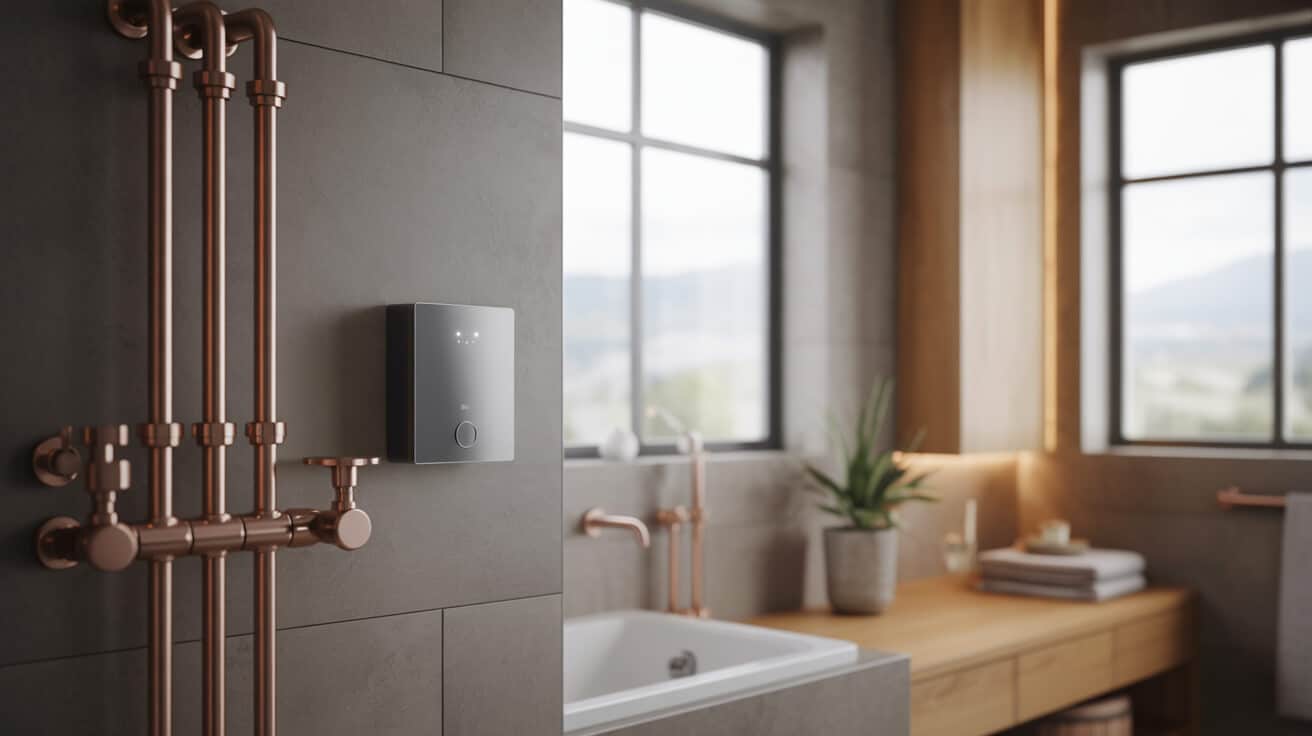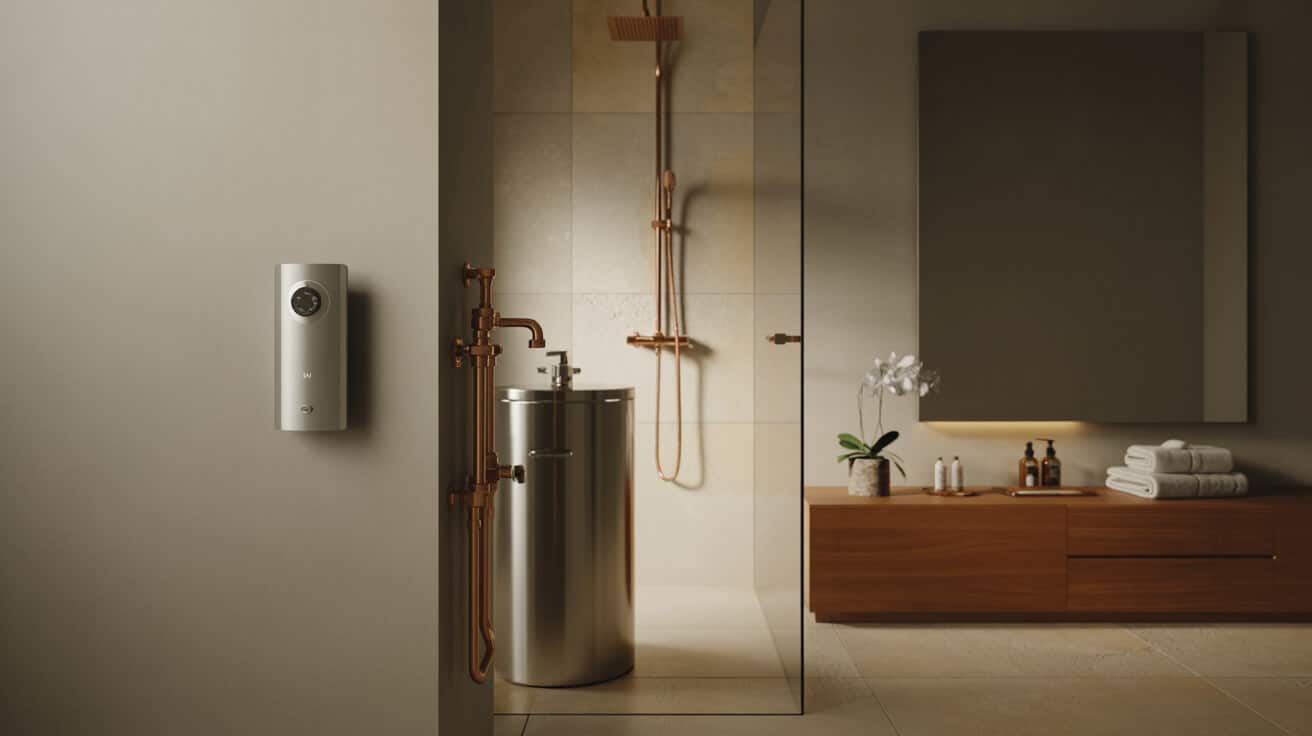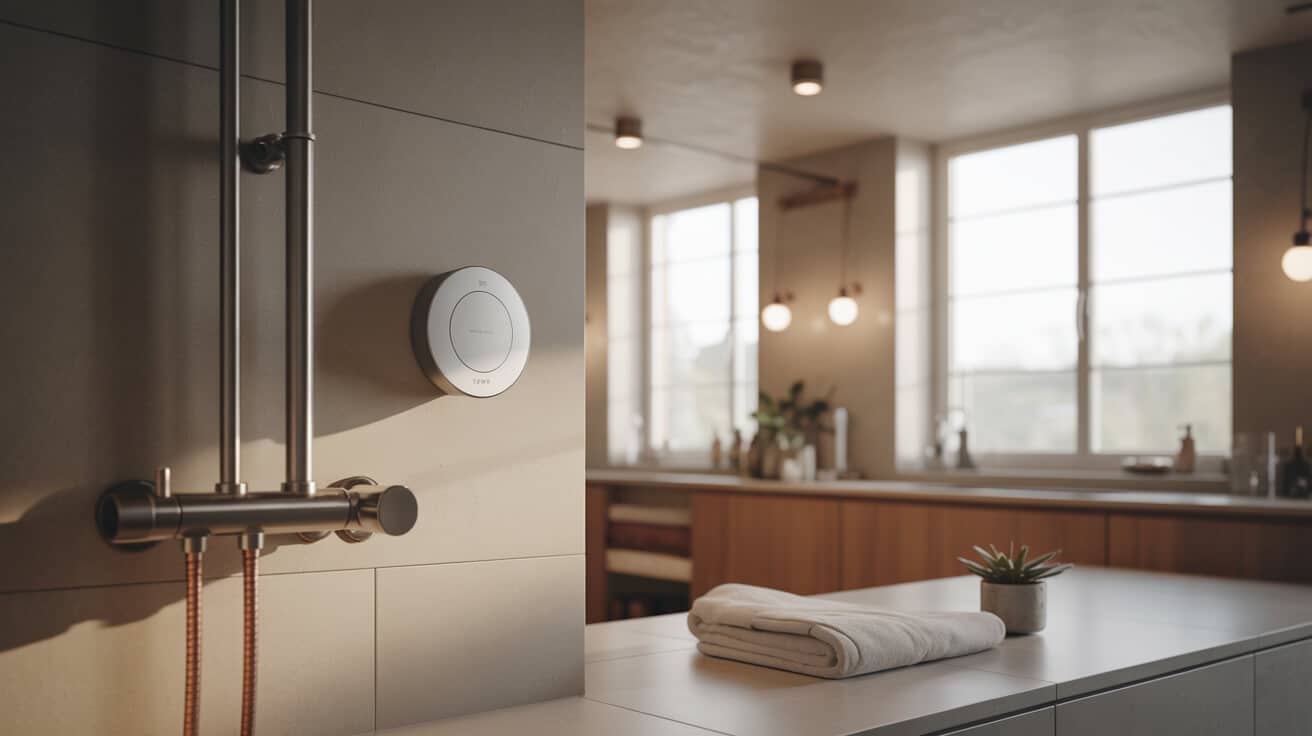Lead
Deployed in both new and legacy heating systems, the wireless cylinder thermostat performs the critical task of evaluating water temperature in storage units—transmitting real-time data to a paired receiver or central heating controller using wireless communication protocols. This approach bypasses the architectural constraints imposed by hardwiring, delivering rapid installation and maintenance pathways for property owners, landlords, facility managers, and engineers. Through adaptive scheduling, programmable limits, and integration with user interfaces or proprietary platforms, wireless models align with evolving standards set forth by building regulations and are frequently specified for their contribution to energy savings, user comfort, and legal compliance. Plumbers 4U and comparable professional services often recommend wireless thermostatic solutions to ensure your system remains accessible, compliant, and future-ready.
Etymology or name origin
The expression “cylinder thermostat” traces its lineage to early electro-mechanical regulators—typically clamped or strapped to cylindrical hot water storage vessels. The evolution toward wireless designation reflects the industry’s embrace of cableless communication, primarily to circumvent physical wiring challenges, reduce on-site disruption, and meet contemporary expectations for user convenience. As the regulatory environment prioritised modular building design and the renovation of older housing stock, the term gained traction with manufacturers, specifiers, and property asset managers. Within technical catalogues and professional documentation, the phrase connotes not just temperature regulation but implies wireless pairing, fault diagnostics, and digital user interaction.
Overview / context
A wireless cylinder thermostat is indispensable in safeguarding thermal management in water storage systems—particularly in multi-user, multi-unit, and hard-to-wire properties. Its core function consists of sensing the temperature proximate to or within a hot water cylinder, relaying this information wirelessly to a boiler, programmer, or control panel. In the United Kingdom, properties with unvented or vented storage cylinders are subject to legal requirements stipulating temperature constraints, often requiring property owners or managers to demonstrate robust control and timely maintenance. The apparatus’s integration bypasses historic construction limitations and enables upgrades without extensive building intervention—a recurring concern highlighted by landlords, letting agents, and renovators managing complex or occupied buildings.
In a wider context, these devices interface seamlessly with centralised building management, adaptive smart homes, and grid-responsive heating frameworks—making them an essential component in compliance-driven energy retrofits, cost-saving upgrades, and company-wide facility management programmes. Their routine adoption by Plumbers 4U highlights their role in maintaining system longevity, safety, and legal compliance across the diverse spectrum of your properties and assets.

History
Origins
Rooted in mid-20th century developments, the original cylinder thermostats were mechanical, featuring bimetallic strips or probe sensors that required significant wiring and manual calibration. The need for thermal safety and economic hot water use was underscored by post-war building codes and the growth of central heating as a domestic and institutional asset.
Industrial emergence
By the late 1980s, new radio frequency components made possible the separation of sensor and controller, enabling the first wave of wireless thermostat prototypes. The spread of digitally controlled, remotely operated devices was further catalysed by upgrades to British housing stock and the global push for retrofitting older buildings with safer, more efficient infrastructure. With government subsidies and inspection regimes rising in prominence, property managers increasingly sought out devices that reduced installation complexity, minimised tenants’ disruption, and improved audit traceability.
Contemporary evolution
In the 21st century, increased building automation and the proliferation of consumer-facing smart home technologies drove exponential adoption of wireless thermostats in the UK and globally. Integration with cloud-based scheduling, app-controlled overrides, and advanced error diagnostics has become typical, enhancing property managers’ ability to maintain regulatory compliance, reduce callouts, and prevent scalding or legionella events. Regulatory emphasis on decarbonisation, including the Minimum Energy Efficiency Standards (MEES), further incentivized both landlords and commercial operators to specify wireless controls, ensuring asset compliance and market relevancy.
Concept / description
Functional principles
At its core, a wireless cylinder thermostat consists of a precise temperature sensor installed on the exterior of the hot water cylinder, an RF transmitter module, and a paired wireless receiver—typically located near the boiler or zone valve. When water within the cylinder approaches the user’s configured setpoint, the sensor transmits a coded signal. The receiver, having learned to recognise this signal through a secure pairing protocol, responds by switching the heating source on or off, as necessary.
Main components
- Temperature probe: Measures surface or immersed water temperature, commonly using an NTC (Negative Temperature Coefficient) thermistor.
- Wireless transmitter: Sends sampled temperature data to the receiver using an assigned frequency (e.g., 868 MHz in Europe).
- Receiver unit: Receives transmitted signal and physically operates the boiler, immersion heater, or 2/3-port zone valve.
- Control panel/user interface: Allows users or operators to set temperature thresholds and configure schedules.
- Power supply: Battery, low-voltage electrical, or integrated rechargeable module, with low-power LED or LCD indicators.
Communication protocols
Frequency selection, adaptive channel hopping, and digital handshaking minimise external interference and maximise signal integrity. Security protocols prevent unauthorised interaction with the device, while error codes or diagnostic sequences flag physical or communication failures to your property managers, users, or maintenance partners.
Design standards
Devices are required to meet safety marks such as CE, comply with applicable UK Building Regulations (notably G3 and Part L), and obtain WRAS certification for water-contact components. Plumbers 4U, when tasked with installation or annual validation, follows these requirements to protect your properties from risks associated with non-compliance.
Functionality / purpose / applications
Domestic installations
From detached and semi-detached homes to flats, users benefit from the wireless thermostat’s capacity to deliver precise thermal control without the need for disruptive rewiring or cosmetic repairs. User-adjustable profiles, vacation mode, and overheat limiters provide enhanced personalization, safety, and peace of mind.
Commercial and institutional deployment
Facilities teams, estate managers, and landlords rely on wireless thermostats for batch upgrading, centralised remote monitoring, and coordinated maintenance. By automating compliance and enabling wireless notification of failures or out-of-range events, these systems lower cost, reduce manual intervention, and shorten response times—an especially valuable asset in multi-unit, public sector, or high-occupancy environments.
Retrofitting and new-builds
Legacy housing and listed properties frequently pose logistic obstacles for cabling. Wireless thermostats mitigate your physical constraints and reduce compliance risk during upgrades, while developers increasingly specify these devices in new builds to future-proof your installations against the tightening tightening of energy benchmarks and to facilitate later adaptation for smart environments.
User interaction and adaptive scheduling
Sophisticated models allow app-driven schedule configuration, occupancy-responsive heating, and temperature logging for compliance record-keeping. In large organisations or rented property portfolios, such features underpin your strategic asset protection and compliance verification routines.
Classifications / types / variants
Wired and wireless thermostats
Wired thermostats remain prevalent where construction or refurbishments make cable runs convenient. However, their inflexibility post-installation often precludes their deployment in occupied or architecturally sensitive settings.
Wireless thermostats are distinguished by their ability to be retrofitted and repositioned as needed, using encrypted, interference-resistant radio frequency links. Their popularity in your organisation’s facilities reflects the ongoing trend toward scalability and non-invasive upgrades.
Programmable and adaptive devices
Some models are basic—offering binary on/off logic—while others leverage microcontroller logic, integrating learning functions that learn user preferences, optimise efficiency, or manage multi-zone heating.
Feature matrix and protocol variants
| Feature/Type | Wired | Wireless |
|---|---|---|
| Cabling Required | Yes | No |
| Retro-fit suitability | Limited | Excellent |
| User interface | Fixed, panel-based | Remote, app, or display |
| Power source | Mains/Low voltage | Battery/self-powered |
| Integration with smart controls | Limited | Advanced (app, cloud, schedule) |
| Risk of signal failure | Low | Medium (mitigated by redundancy) |
| Diagnostics | Manual | Automated (error codes, logs) |

Systems / tools / methodologies
Installation process
- Affix sensor/probe to cylinder (recommended: lower third of cylinder for accurate sampling), using a WRAS-approved mounting strap or adhesive pad.
- Instal transmitter, ensuring unobstructed line of sight or signal path to receive module.
- Wire receiver into heating circuit per device schematic, respecting polarity and terminal conventions.
- Pair transmitter and receiver using manufacturer protocol (button sequence or in-app workflow).
- Test switching function using externally verified thermometer readings and simulate temperature change events.
- Document device settings, serials, and physical location for maintenance record.
Tools and commissioning
- Standard toolkit: screwdrivers, wire strippers, voltage detector, digital thermometer, WRAS checklist.
- Specialist tools: RF tester, battery status metre, or proprietary pairing assistant (varies by brand).
- commissioning must include signal strength assessment at full range, low-temperature failover test, and control bus verification on linked systems.
Manufacturer and brand landscape
Plumbers 4U, along with other certified engineers, recognises product series from Honeywell, Drayton, Salus, Tado, and Heatmiser as industry standards—selected for their support, warranty, protocol stability, and update cycles.
Maintenance methodologies
Annual service routines require validation of sensor adhesion, battery touchpoint cleaning, replacement cycling (if necessary), and re-commissioning of transmitting and receiving units. Digital logs should be updated to reflect each adjustment or intervention.
Stakeholders / entities involved
Homeowner and resident roles
Users interact primarily with scheduling interfaces, mobile apps, or wall-mounted displays. Benefits include reassurance regarding hot water reliability, risk reduction for scald or cold events, and the ability to automate routine adjustments according to their lifestyle.
Installer and engineer responsibilities
Professional engineers—especially those associated with Plumbers 4U—execute installations per manufacturer instructions and national code, maintain service records, and perform diagnostics in cases of in-field or remote-system failure. Key deliverables: correct configuration, documented setup, customer walkthrough of operation, and compliance with notification protocols for rental and commercial properties.
Landlords, property managers, facility directors
Legal risk and compliance liability drive specification and recurring investment in wireless thermostat technology. Automated record-keeping, remote alerting, and pre-emptive replacement cycles are routinely managed using digital dashboards, enabling efficient asset protection and an improved safety profile across portfolios.
Manufacturers and standards bodies
Manufacturers secure compliance through WRAS and CE marks, and standards bodies continually update device requirements in response to advances in building science, data security, and public health policy.
Legal / regulatory / ethical considerations
Regulatory frameworks
Key standards in the UK pertain to Part G (hot water safety), G3 (unvented hot water storage systems), Part L (energy performance), and the Water Supply (Water Fittings) Regulations. WRAS approval is mandatory for wetted components. Professional installers and service providers such as Plumbers 4U must be certified and comply with these controls during both installation and maintenance.
Safety and public health requirements
Devices must feature fail-safes to prevent overheating, with manufacturers specifying maximum setpoints and lockout functions. Installations are often inspected for safety by local authorities, insurance adjusters, or regulatory agencies—especially in rented accommodation and commercial projects.
Landlord and facility management responsibilities
Rental and multiple-occupancy property managers bear statutory duties to maintain functioning hot water control, promptly address failures, and document service calls or replacements. The deployment of wireless controls addresses your business’s obligations to tenants and regulatory agencies for rapid restoration of compliant, safe service.
Documentation and compliance procedures
Standard operating procedure for both Plumbers 4U and competitors requires completion of commissioning checklists, serial tracking, and maintenance schedule logs; digital records may be required at audit or when transferring asset management duties.
Performance metrics / data / measurements
Technical performance
- Accuracy: Maintains user-set temperature within ±1ºC, demonstrated at commissioning and annual inspection.
- Signal strength: Minimum functional RF range documented per property (e.g., 20–50 metres through typical UK construction).
- Energy impact: Measurable improvement in hot water energy performance (quantified via pre- and post-installation energy audit if required).
- Battery cycle: Typical design lifespan: 12–36 months; status check automated via interface or maintenance log.
Example Performance Table
| Metric | Typical Value/Range | Test Method |
|---|---|---|
| Temperature accuracy | ±1°C | Calibrated thermometer |
| Wireless range | 20–50 metres | RF signal metre |
| Battery life | 12–36 months | Manufacturer warranty |
| Response time (actuation) | <10 seconds | Manual override test |
| Maintenance interval | 12 months | System log record |
Challenges / barriers / limitations
Operational and technical hurdles
- RF signal dropout from reinforced masonry, electrical equipment, or high-density properties.
- Battery exhaustion without user alert or failure to perform scheduled maintenance.
- Unrecognised device errors in software or firmware, especially after upgrades or during device pairing events.
- Exposure to untrained personnel or misconfiguration by end users.
- Initial hardware investment for multi-property or portfolio-scale upgrades.
- Perceived or real complexity of configuration from users accustomed to manual systems.
- Tenant apprehension about digital tracking or smart control “takeover” of basic functions.
Regulatory uncertainties
- Ambiguities in retrofit requirements for historic or unregistered properties.
- Accelerating cadence of regulatory overhaul—requiring ongoing retraining for engineers and property teams.
User experience and accessibility
- App, dashboard, or interface complexity for non-digital-native tenants.
- Language support, physical accessibility, or digital literacy challenges.
Impact / influence / legacy
Policy and compliance catalysts
The adoption of wireless cylinder thermostats supports organisational and governmental ambitions to drive energy conservation, decarbonisation, and public health. They facilitate remote monitoring and compliance reporting, providing a verifiable audit trail for energy use, maintenance activity, and asset protection across your premises.
Transformation of trade and property practice
Decades of innovation and best-practice adoption have led organisations like Plumbers 4U to champion professional installation and support, offering comprehensive record-keeping and service transparency that protects your business from legal pitfalls and positions your assets advantageously for regulatory change.
Societal normalisation
Continued user exposure through landlord, developer, and maintenance engagement has normalised proactive temperature control, prompting demand for even greater customization, notification, and convenience in both domestic and commercial environments.
Future directions, cultural relevance, and design discourse
Aligned with rapid advancements in wireless hardware miniaturisation, battery-free energy harvesting, and near-field communication, future wireless cylinder thermostats will increasingly offer predictive maintenance, self-learning behavioural adjustment, and deeper system integration with centralised facilities management. Your organisation stands to benefit from these advances through improved service analytics, proactive regulatory compliance, and minimised unplanned outages. Regulatory authorities anticipate new minimum standards mandating wireless or programmable controls, shaping the landscape for retrofits and new construction. Visually minimalist design, enhanced interface accessibility, and greater cultural resonance—via customization, language support, and user profile adaptation—will continue to drive demand. Ongoing collaboration between standards bodies, manufacturers, and service leaders like Plumbers 4U assures the next era of temperature control will be more responsive, more integrated, and more attuned to your property, your users, and your asset performance objectives.

